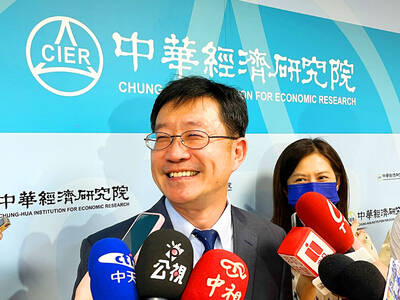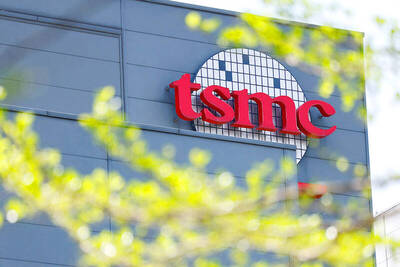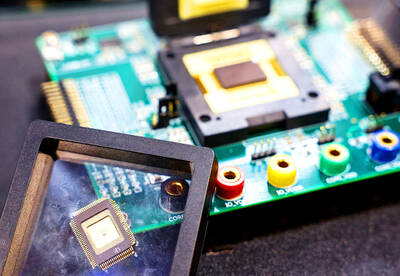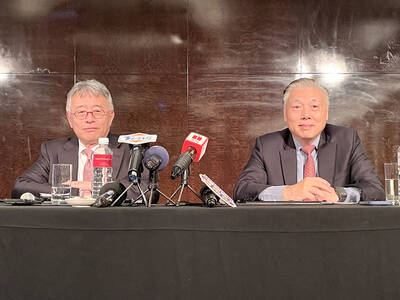Wretch Co (無名小站), the nation’s leading social networking Web site, received a homepage facelift yesterday and came out looking eerily similar to its parent company Yahoo-Kimo Inc (雅虎奇摩).
Through the revamped site, Wretch was hoping to foster a more content-based network and encourage users to interact by applying a four-point measuring system to grade users’ favorite writings, photos and blogs, the company said.
The redesigned site will contain 12 major categories representing multiple facets of life in Taiwan: creation, travel, lifestyle, sports, entertainment and high-technology, among others. Each section will contain between three and five subcategories.
“A traditional news site with similar categories and editors deciding which stories get published uses a top-down approach,” Chien Chi-yu (簡志宇), Wretch founder and now director at the Wretch division of Yahoo, told reporters yesterday.
“The Wretch homepage turns this on its head by having users pick which news is important to them in a democratic fashion and employing a bottom-up methodology,” Chien said.
The four-point ratings are for recommendations, collectibles, popularity and date of release. Users need to pay attention to all four criteria in order to have their publications pushed up in the rankings and appear on Wretch’s homepage.
Wretch now calls itself “Taiwan’s biggest multimedia reserve,” with more than 250 million entries, 1.7 billion photos and more than 8 million short films.
Wretch’s new appearance also coincides with a redesign of the Facebook Web site.

WEAKER ACTIVITY: The sharpest deterioration was seen in the electronics and optical components sector, with the production index falling 13.2 points to 44.5 Taiwan’s manufacturing sector last month contracted for a second consecutive month, with the purchasing managers’ index (PMI) slipping to 48, reflecting ongoing caution over trade uncertainties, the Chung-Hua Institution for Economic Research (CIER, 中華經濟研究院) said yesterday. The decline reflects growing caution among companies amid uncertainty surrounding US tariffs, semiconductor duties and automotive import levies, and it is also likely linked to fading front-loading activity, CIER president Lien Hsien-ming (連賢明) said. “Some clients have started shifting orders to Southeast Asian countries where tariff regimes are already clear,” Lien told a news conference. Firms across the supply chain are also lowering stock levels to mitigate

Six Taiwanese companies, including contract chipmaker Taiwan Semiconductor Manufacturing Co (TSMC, 台積電), made the 2025 Fortune Global 500 list of the world’s largest firms by revenue. In a report published by New York-based Fortune magazine on Tuesday, Hon Hai Precision Industry Co (鴻海精密), also known as Foxconn Technology Group (富士康科技集團), ranked highest among Taiwanese firms, placing 28th with revenue of US$213.69 billion. Up 60 spots from last year, TSMC rose to No. 126 with US$90.16 billion in revenue, followed by Quanta Computer Inc (廣達) at 348th, Pegatron Corp (和碩) at 461st, CPC Corp, Taiwan (台灣中油) at 494th and Wistron Corp (緯創) at

NEGOTIATIONS: Semiconductors play an outsized role in Taiwan’s industrial and economic development and are a major driver of the Taiwan-US trade imbalance With US President Donald Trump threatening to impose tariffs on semiconductors, Taiwan is expected to face a significant challenge, as information and communications technology (ICT) products account for more than 70 percent of its exports to the US, Chung-Hua Institution for Economic Research (CIER, 中華經濟研究院) president Lien Hsien-ming (連賢明) said on Friday. Compared with other countries, semiconductors play a disproportionately large role in Taiwan’s industrial and economic development, Lien said. As the sixth-largest contributor to the US trade deficit, Taiwan recorded a US$73.9 billion trade surplus with the US last year — up from US$47.8 billion in 2023 — driven by strong

ASE Technology Holding Co (ASE, 日月光投控), the world’s biggest chip assembly and testing service provider, yesterday said it would boost equipment capital expenditure by up to 16 percent for this year to cope with strong customer demand for artificial intelligence (AI) applications. Aside from AI, a growing demand for semiconductors used in the automotive and industrial sectors is to drive ASE’s capacity next year, the Kaohsiung-based company said. “We do see the disparity between AI and other general sectors, and that pretty much aligns the scenario in the first half of this year,” ASE chief operating officer Tien Wu (吳田玉) told an